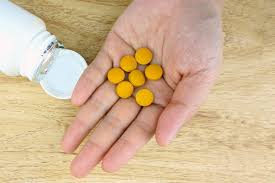Antihistamines, such as Hydroxyzine, have been used successfully in the treatment of anxiety because cases will experience an acute episode. Clinical Studies: Most trials consistently demonstrated an approximately 75% reduction in anxiety symptoms when hydroxyzine was used at dosages of between 50 and100 mg/daily [Table /Caption] Given its nonaddictive properties, unlike benzodiazepines that are at risk for dependence, hydroxyzine is preferred choice when it comes to the management of short-term anxiety.
It works by blocking histamine receptors in the brain, which causes sedation (drowsiness) and is also used as a sleep-aid. This process is similar to the way hydroxyzine acts as an antihistamine, plus it can help combat forms of nervousness. In one pollster example, such as 2009 a study published in Journal of Clinical Psychopharmacology results showed that after four weeks hydroxyzine treatments helped 60% or patients who suffer from generalized anxiety disorder (GAD) to improve symptoms significantly.
Hydroxyzine is additionally logical in the alleviation of pruritus (tinting) without further exacerbating manifestations, and as a preoperative opiate to change narcotic reaction. there have been cases accepted for hydroxyzine's function inside the treatment of truancy related soreness but it isn't continually ok supported by fact so at this detail yet much less regularly any blessing has been supported about via methods of AHA authorities advocating evidence based totally custom guidelines. Hydroxyzine improves therapeutic outcomes by diminishing these symptoms. Patients with GAD, for example, also generally benefit from improved sleep quality during the first week of treatment and we know that improvements in hybrid spectrum symptoms typically accompany any reductions in initial anxiety.

Its safety profile is favourable for use in a wide variety of patients including those intolerant to the side effects of other anxiolytic drugs. Hydroxyzine is frequently prescribed for kids and older adults, with dosages modified according to age group as well as weight so that you can help alleviate the possibility of drowsiness or even different additional unwanted side effects. Dosages for pediatric cases are usually in the range of 0.6 to 1.2 mg/kg per day, whereas adult patients might receive somewhere between zero and nearly one hundred milligrams each morning on anxiety severity basis.
Williams said hydroxyzine is given for a number of other things (in addition to anxiety, it can be used as antihistamine and anti-nausea). This versatility makes it even more attractive as a treatment consideration, especially for patients who would be helped by one medication that treats multiple symptoms. Understanding these different contexts is a great place to start your journey into everything hydroxyzine may be used for.Find more information on this medication visit what is hydroxyzine used for.Find more information on this medication visit what is hydroxyzine used for..